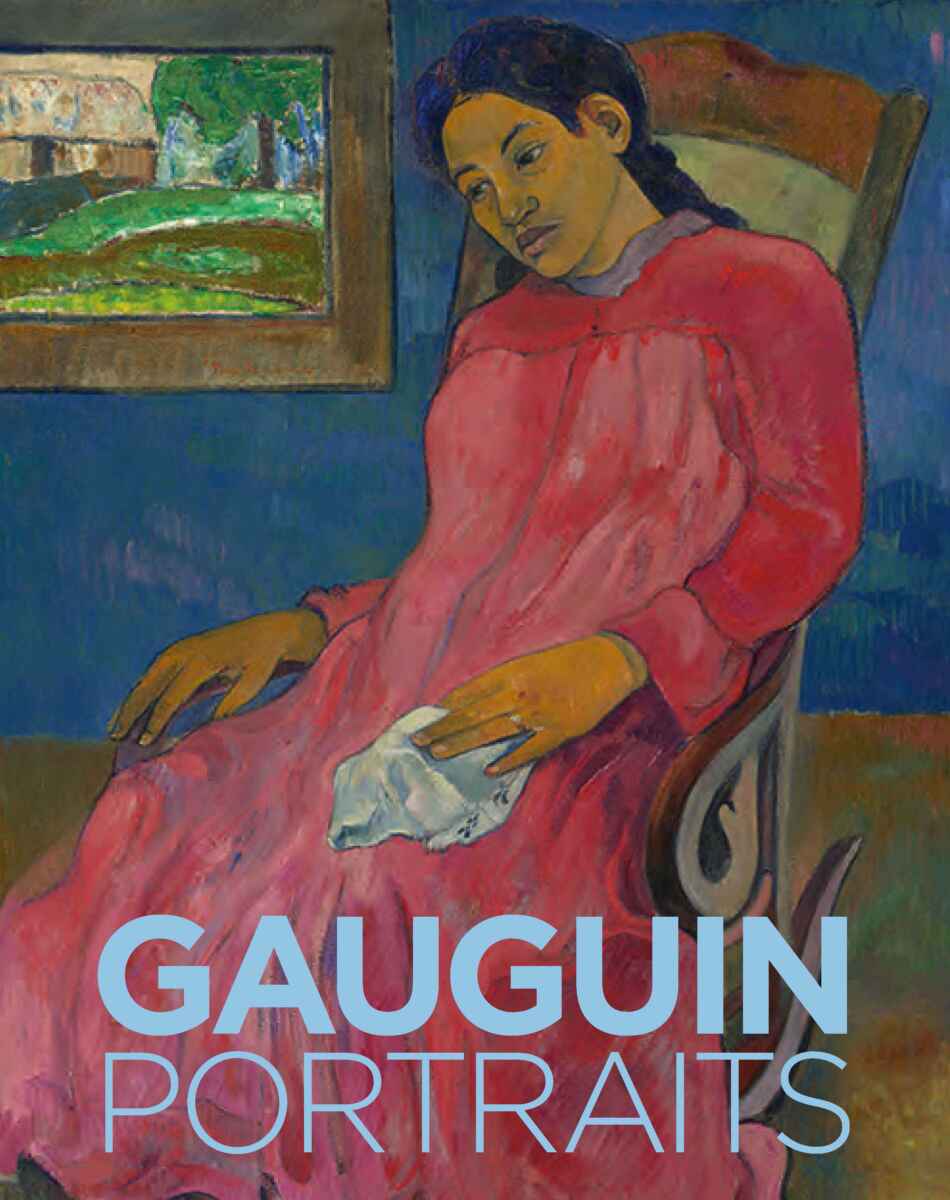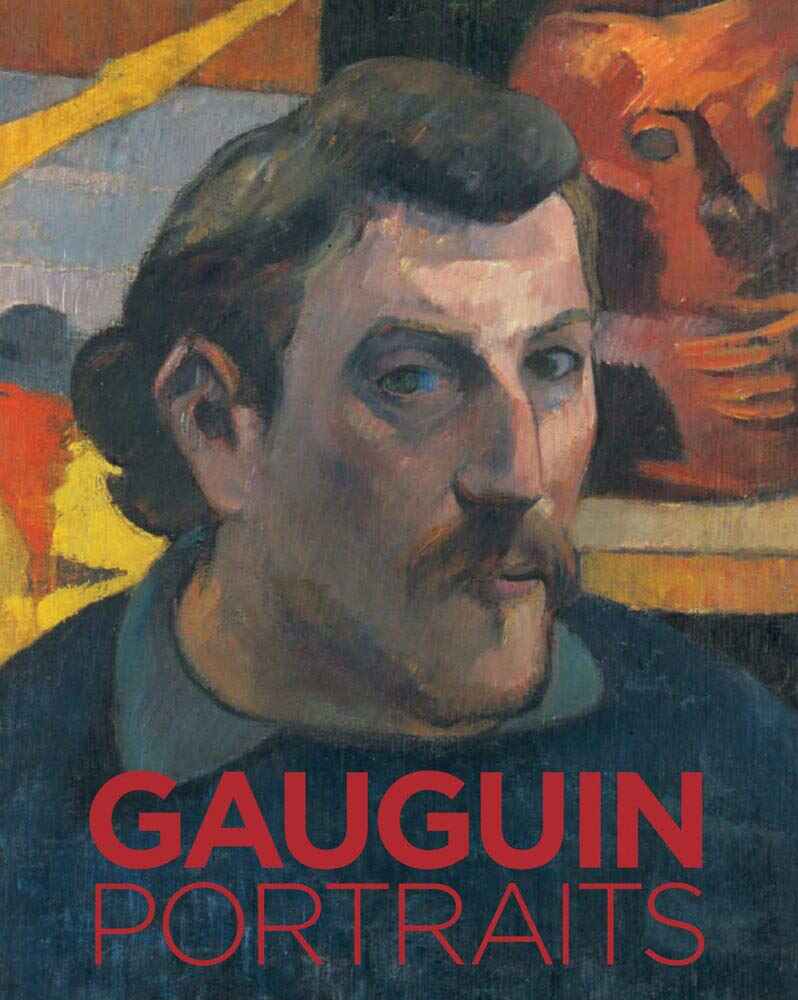
Review of the catalogue and the exhibition at The National Gallery, London
Until January 26, 2020 you can still visit the great Credit Suisse exhibition Gauguin: Portraits at the National Gallery in London (English catalogue: Amazon.co.uk, Amazon.com; French edition: Amazon.fr). The show is organized in cooperation with the National Gallery of Canada, curated by Cornelia Homburg and Christopher Riopelle, and presents over 50 works by Paul Gauguin, including mainly paintings, but also sculptures, prints and drawings. They come from museums and collections around the globe, from the United States to Japan, from Brazil to France.
The starting point for the present in-depth investigation into the fascinating ways the French artist explored portraiture was the extraordinary sculpture by Paul Gauguin of his artist-friend Meijer de Haan in the collection of the National Gallery of Canada.
According to the exhibition curators, Paul Gauguin was self-obsessed both in his artistic expression as in his writings. From his first works to his final years in French Polynesia, he continually depicted himself. Self portraits account for the largest group of all his paintings. But making himself the chief subject of his art was more than pure narcissism. Paul Gauguin firmly believed that the world could ony be apprehended from one’s personal point of view. He thought it impossible that his vision and art could exist beyond the frame of his memories, cultural heritage, dreams and emotions. Therefore, self portraits were the ideal expression of the “I” of his experience.
The exhibition shows how Paul Gauguin became fascinated by societies that to him seemed close to nature, closer than the industrialized Paris (Room 4 and 5 are dedicated to his first trip to Tahiti in 1891-3 and his second in 1893-5). The self portraits in Room 1 show how he constantly reinvented himself as a “savage”, as Christ, as an artist-martyr, etc. Room 3 shows Gauguin’s fraught relationships with fellow artists Vincent van Gogh and Meijer de Haan.
A few words about Paul Gauguin’s biography: He saw himself as an outsider and stylized himself as a “savage from Peru”. He was born in Paris on June 7, 1948 to Clovis Gauguin and Aline Chazal. His father was a journalist; his mother, of Spanish-Peruvian descent, was the daughter of the writer, political activist and feminist Flora Tristan.
After the French Revolution of 1848, which ended the July Monarchy (1830-48) and led to the Second Republic, the Gauguin family left Paris for Lima, Peru. Clovis died during the voyage. Paul Gauguin spent the years from 1849 until 1854 in Lima. In late 1854, together with his mother and his sister Marie, the still very young, future artist returned to France. The family settled in Orléans. From 1859 until 1864, Paul Gauguin received a Catholic education in Orléans and Paris. He joined the merchant marines and navy in 1865 and traveled around the world until 1871. After his mother’s death in 1867, the stockbroker and art collector Gustave Arosa became his legal guardian.
In 1872, with Arosa’s help, Paul Gauguin got a job as a stockbroker in Paris, where he met the Danish Mette Gad, whom he married the following year. At that time, he painted during his spare time. He first exhibited a landscape at the Paris salon in 1876.
In 1878, he became friends with the Impressionist painter Camille Pissarro and was invited to exhibit together with the Impressionists in 1879. Pissarro introduced him to Paul Cézanne. Let’s forget the rest of the biography and return to the exhibition Gauguin: Portraits. The oil painting Still Life with Apples, a Pear and a Ceramic Portrait Jug (1889) from Harvard Art Museum / Fogg Museum, Massachusetts is a work still very much indebted to Paul Cézanne. It is part of the Surrogate Portraits section (Room 6 with still lifes) of the London exhibition. According to the curators, Paul Gauguin had been working towards his ground-breaking surrogate portraits, which evoke the memory of a person in symbolic guise, from an early point in his career. Today, those portraits count among the signal achievements of the artist’s final years.
At the London exhibition, you can admire Gauguin’s Self-portrait with Yellow Christ from 1890/1 (musée d’Orsay, Paris). At the famous 2015 Paul Gauguin exhibition at Fondation Beyeler, it was presented side by side with the Yellow Christ from 1889 (Collection Albright-Knox Art Gallery, Buffalo). At the National Gallery, the focus is set on a confrontation of nine self-portraits, with Self-portrait with Yellow Christ from the Musée d’Orsay as the highlight. It is a triple self portrait. Paul Gauguin stands between two recent works. On the left is the painting Yellow Christ from 1889 (shown in Basel). On the right is the distorted self portrait in the Anthropomorphic pot (1889, enamelled sandstone, from the musée d’Orsay); Gauguin began making highly individual experimental ceramics from 1886. In London, the grotesque self portrait in form of a pot, inspired by Pre-Columbian works, is exhibited in the same room as the Self-portrait with Yellow Christ from 1890/1 (musée d’Orsay), a work which affirms once again Gauguin’s belief that the world can only be perceived from a subjective point of view. Everything an artist makes is, in effect, a self portrait.
The final room of the London exhibition is dedicated to Gauguin’s last years of life on the Marquesian Island of Hiva Oa, marked by illness and a smaller artistic output. He died on May 8, 1903 aged 54. His last and, according to the curators, perhaps simplest and most direct self portrait can be admired in the exhibition: Self Portrait, 1903 (Kunstmuseum Basel)
Last, but not least, let’s mention the highlight of the National Gallery exhibition: Barbarian Tales (1902; Museum Folkwang, Essen). In this work, Paul Gauguin’s friend, the Dutch painter Meijer de Haan, who had died in 1895, reappears as a vivid and alarming presence, shown with exaggeratedly devilish features, glowing green eyes and a clawed foot. The Jewish Meijer de Haan wears a missionary dress, probably to embody what Gauguin most disliked about the Judeo-Christian tradition. By contrast the serene and beautiful Polynesian couple represent two religions of his adodpted home: Buddhism in the andryogynous figure seated in the lotus position and Ma’ohi beliefs with the woman on the right.
The catalogue Gauguin: Portraits features not only the works exhibited, but also ten articles by specialists regarding the artists self portraits (Egos And Alter Egos), Gauguin in Brittany, Gauguin’s stay in Tahiti (Likeness, Myth and Cultural Identity), Gauguin’s Still Lifes as Portraits, Gauguin and Portraiture in the Late Nineteenth Century and much more.

This review is based on the exhibition catalogue Gauguin: Portraits. National Gallery of Canada, 2019, Order the English book from Amazon.co.uk, Amazon.com. Order the French edition / édition française from Amazon.fr.
The book cover shows a detail of the work Melancholic (Faaturuma), 1891. This work showing a woman in a salmon-pink dress comes from the Nelson-Atkins Museum of Art, Kansas City, Missouri.

This is the Gauguin: Portraits French edition / édition française catalogue cover. Order the French book from Amazon.fr. The French book cover shows a detail of Self-portrait with Yellow Christ, 1890–91 (musée d’Orsay, Paris).
For an easier reading, quotations and partial quotations have not been put between quotation marks.
The exhibition in the National Gallery in London will end on January 26, 2020.
Exhibition and catalogue review added on December 30, 2019 at 22:24 German time / 21:24 London time.